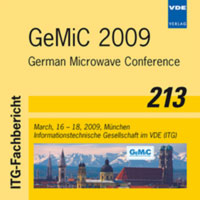Helicopter Assisted Landing System - Millimeter-Wave against Brown-Out
Conference: GeMiC 2009 - German Microwave Conference
03/16/2009 - 03/18/2009 at München, Germany
Proceedings: GeMiC 2009
Pages: 3Language: englishTyp: PDF
Personal VDE Members are entitled to a 10% discount on this title
Authors:
Pagels, A.; Hägelen, M.; Briese, G. (FGAN-FHR, Neuenahrer Str. 20, 53343 Wachtberg, Germany)
Tessmann, A. (IAF, Tullastr. 72, 79108 Freiburg, Germany)
Abstract:
Catastophy management, alpine and sea rescue as well as military operations are unimaginable without the advantage of helicopters. The possibility of landing in areas with none infrastructure is essential. At this the pilot is confronted with different environmental conditions witch handicap a controlled navigation. Dust and snow are the two most dangerous conditions during the approach for a landing, also troubled water surface with spindrift can compromise a rescue mission over sea. Today pilots have to navigate the landing by sight and optical sensors which are useless under brown-out conditions all types. No information about height and drift with the necessary precision can be given. Radar sensors offer this capability of transmission through dust, snow, fog, and spindrift. Employing an appropriate signal processing, also the necessary drift information can be extracted from the Doppler shift of the radar. A propotype radar in the millimeter range was build on, based upon distributed and networked modules, to extract precise height and drift information: This informations are fed into the avionic system of the helicopter and used as an aid for landing and take-off during adverse environmental conditions. The paper presents the design of the miniature millimetre wave radar modules, the design of the broadband high gain antennas and the implementation into the system.


